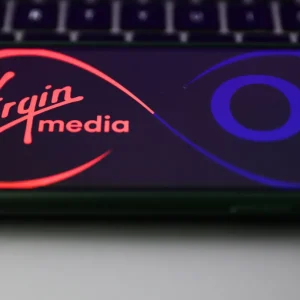The big announcement so far has been VMware vCenter Operations Management Suite. Can you give us a brief run through of that?
It’s been a long time coming, we’ve been working on it for many years. The way we’ve been thinking about it is, we’ve been talking about cloud computing and virtualisation being the on-ramp for it. It has broken a lot of the traditional models; specifically we’re in a world where there is not a one-to-one tie from an application to a server. A lot of management tools assume that was the case. We’re in a world where things are less tied down, there are more and more users coming in and a lot more movement of virtual machines. The traditional model does not work in a more dynamic environment.
The suite is divided into three. The first part of it is the core infrastructure management. What we’re trying to do with this is filter the data to be at the right level for problem solving. It gives a top-level dashboard view, making it easy to know when you should care about something. Another factor is around predicting when problems will occur rather than telling you after they did, while not compromising the ability to troubleshoot.
The second element is applications. There is a lot of work going on around getting applications ready for the cloud. The introduction of vFabric Application Management is around provisioning applications in the cloud and then monitor them. On the monitoring side, when you have a cloud world in place it can be quite hard to know what is going on underneath the covers, so you need the tools to be able to let you know.
The final element is for the CIOs, the IT Business Management Suite. We see CIOs moving from a builder to a broker. If you go back three years or so an IT department typically owned and managed everything. But now with clouds and SaaS there is a lot of choice. This is a new area for VMware; it helps CIOs go through the choices – public or private cloud, and what’s the right mix of risk and cost.
It is a fair argument that the management of virtualised environments has not kept pace with with the technology itself. Why has it taken so long for the management to catch up?
The good news is that virtualisation has enabled companies to move faster than ever. The bad news is that virtualisation has enabled companies to move faster than ever. We’ve partnered with a number of existing management tools but we haven’t seen them keep up with what’s happening in these environments. They haven’t been able to be as dynamic and really track things; they’ve been used to the traditional CMDB model.
We’ve done a number of acquisitions and internal building that has led to this tool. vCenter Operations Manager is filling a hole that will let people get control of and understand a very fast moving IT department.
Every time a new platform comes out, it is unfortunately a pattern that the platform is ahead of the management tools so it’s not surprising it takes time to catch up.
Microsoft is adding a lot of virtualisation capabilities to Windows 8. Isn’t that going to cause VMware a few problems?
I’ve been at VMware for 10 years and even eight years ago I was asked when we’d get squished by Microsoft. They will pitch that it is free but ultimately we have a free hypervisor as well and what we’re trying to do is have the most efficient data centre. When you’re an IT department asking how to get the most out of my hardware purchase and the most out of my people, that’s where we shine. We have the best operational costs and the most automation and management tools.
I see our competition as physical hardware and how we get people into the new world as quickly as we can. These announcements are really designed to make it as simply as possible to get on this journey.
Desktop virtualisation has been labelled as the Next Big Thing for a while, but hasn’t tipped over the edge yet. Why do you think that is?
The last two years have seen big changes for desktop virtualisation. The earliest adopters of virtual desktops were mostly regulated industries with mobile workforces, financial services and healthcare for example. The value proposition was they have a lot of important data that is regulated or that they need to be very careful with. But they might have people in the field that require access to those apps and data.
View 5 really focused on user experience, especially over the WAN. That allowed people who work every day with their desktops to do it. We also have Unified Communications in there – you can do video conferencing.
The migration to Windows 7 is helping as well; as companies migrate they are not going to stay on their legacy infrastructure as they want to migrate to a new way of delivering Windows.
And what about the idea of needing to invest in the back-end to enable desktop virtualisation, such as networking, memory and so on?
It’s a different story than you get with server consolidation. You’ve basically replaced cheap hardware under a desk with more expensive hardware in the data centre. The big obsession over the last two years has been exploiting the fact that Windows desktops look very similar to one another. Our product effectively does deduplication or shared images for a lot of users, that really lowers the cost.
The acquisition cost is now lower than physical PCs and that hasn’t been the case until the last year or so. The story now is spending less or the same on acquisitions with the added benefits of centralised security and customers being able to access it from whatever device they are using. I think it will continue to grow as people become more mobile – we can deliver a Windows desktop to an iPad.
The easier these devices get the more you rely on a back-end that is reliable and robust. iPads and so on are effectively state-less devices; a kind of portal to the cloud. So the easier they get the more you have to rely on the security and availability on the back-end.
That brings us on to mobility. I was at VMworld in 2009 when Jerry Chen demoed virtualisation on a mobile device – two completely separate identities, one for work and one personal. You’ve shown off the same thing again this time. Where’s the development been over the last two years?
We started on this path three years ago with the acquisition of a French company and went through a lot of learning, iPhone, Android did not exist. We were really trying to think about where it should head; we went back into engineering, we’ve grown the team substantially and just over the last few months we’ve announced what we’re doing.
Some of it is luck and some is timing. Android took off really well, phones are really powerful through the ARM technology and the presence of App Stores has grown. It’s a different architecture now; we’re working with Telefonica in Europe and Verizon in the US as our strategic partners to take this out.
When we last presented we had an early technology with a different approach. Now we’ve changed the technology and got the partnerships ready to go out with this next year.
It fits in to a comprehensive vision we have for how users interact with IT.
You said you see the competition as people still on physical hardware. What happens when they’ve all virtualised? What does VMware do then?
Getting virtualised for the first time is great – it saves on capital, lets you be more agile. But if you look at our management tools it’s about amplifying the value. Virtualisation is just step one, the next one is getting the value out of being there.






